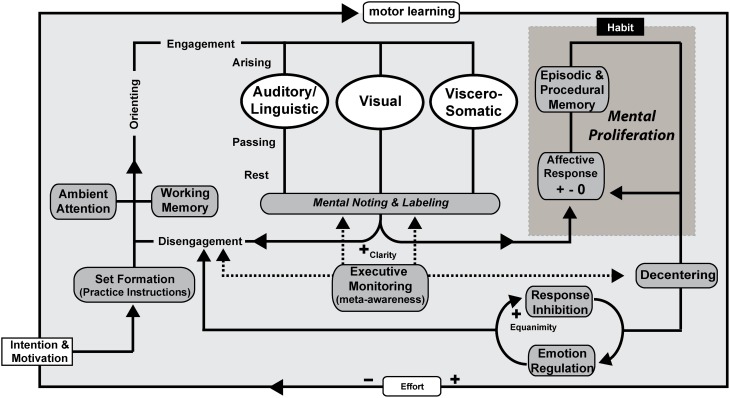Figure 4.
Mindfulness process model—open monitoring receptive practice. OM meditation with no object of focus (ambient attention) is illustrated as an example, but the processes are proposed to be the same across receptive styles of practice. Intention is formed along with motivation to practice before an executive “set” is created. The working memory system helps to maintain motivation and practice instructions. Ambient (diffuse) attentional networks are recruited and sustained along with support by component mechanisms including executive monitoring, emotion regulation, and response inhibition. Mental noting and labeling of stimuli arising, passing, and absent in phenomenal conscious awareness is a form of emotion regulation and contributes to extinction and reconsolidation of maladaptive procedural and declarative memories that represent sensory-affective-motor scripts and schemas. Affective responses may arise in response to an object of attention with a positive, negative, or neutral valence and are likely to proliferate unless awareness and de-centering promote response inhibition and disengagement. Over time and continued practice, effortful control is reduced and awareness itself becomes the object of attention as meta-awareness is cultivated as a skill. Clarity and Equanimity increases through practice.

